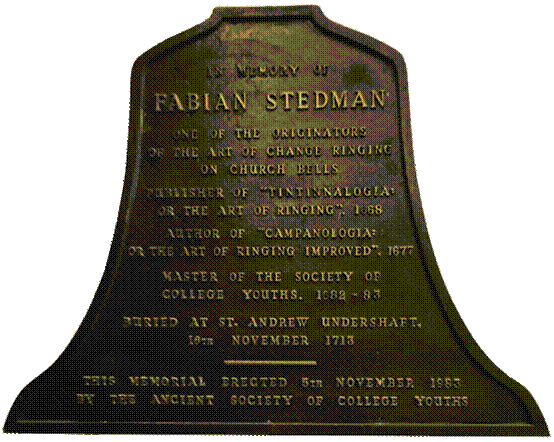Fabian Stedman
Article from The Ringing World, with their kind permission

St Andrew's Undershaft
We take books on ringing for granted (and other sources like the Ringing World Diary or ringing websites) and it is hard for us to imagine a world where the only way to learn about methods was by personal explanation or private hand written notes. Change ringing was still in an early stage of development in the late 17th century. The dominant form was ’plain changes’, where only one pair of bells swap in each change, and it was gradually being supplanted by ‘cross peals’, where several pairs may cross at each change – which we consider normal today.

Fabian Stedman was baptised at Yarkhill Church on 7 December 1640. He was the second son of the Reverend Francis Stedman, so unlike his older brother who entered the priesthood, Fabian was apprenticed to Daniel Pakeman, a master printer in London, where Stedman became a prominent ringer. In later life he appears to have dropped out of ringing, and also changed jobs to became auditor to Customs and Excise for the Crown.
On 17 October 1713 he wrote his will, and a few weeks later, on 16 November, he was buried at the parish church of St Andrew Undershaft in the City of London.
(To enlarge the Bell on the right to read the inscription - hover your mouse over it)
